However, on a Concours, this steering damper thing is easier
said than done. Nobody seems to make a top-mount steering damper kit
for the Concours. Sticking a side-mount damper is complicated by the
fairing and the fact that there's no frame down there, only engine.
Despite blue fingers in the unheated garage in February, I made some crude measurements to find the approximate stroke length needed. For full lock-to-lock motion, the Concours needs a damper with approximately 140 mm of damper stroke. Such dampers are around 420 mm overall length, so I used a piece of wood that length to hold in various positions inside the fairing to convince myself that everything would fit and how it would attach to the frame and the fork.
There are beautiful commercial fork brackets available (e.g. Harris
). For frugality reasons, I used a 41mm clipon from an SV650 (eBay UK,
0.99£ plus 5£ shipping), judiciously sawn and filed. Although Suzuki
probably intended it for something else, there's a convenient boss
which can serve as a damper attachment point. The hole is ~7mm which is
perfect to tap for an 8mm bolt. A crumpled Concours clipon would work
as well.
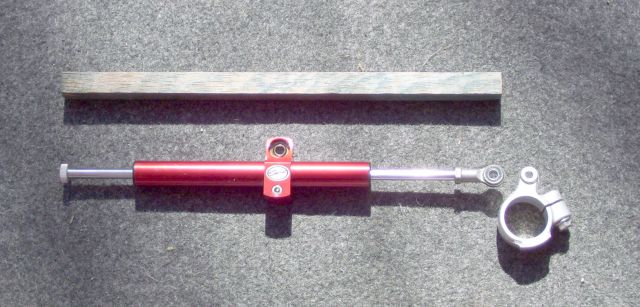
Purchased a Sprint damper from eBay U.K. for 30£ (with an
exorbitant 20£ for shipping), 420mm long, 140mm nominal stroke length.
It has 14 click damping setting, ranging from negligible to
unbelievable. For the Concours, it appears best to have the rod end
attached to a fork bracket and the damper body attached to a bracket
near the engine. There isn't enough room for the Sprint body damper
bracket between the fork tube and the fairing support frame for reverse
mounting. Other brands might be ok.
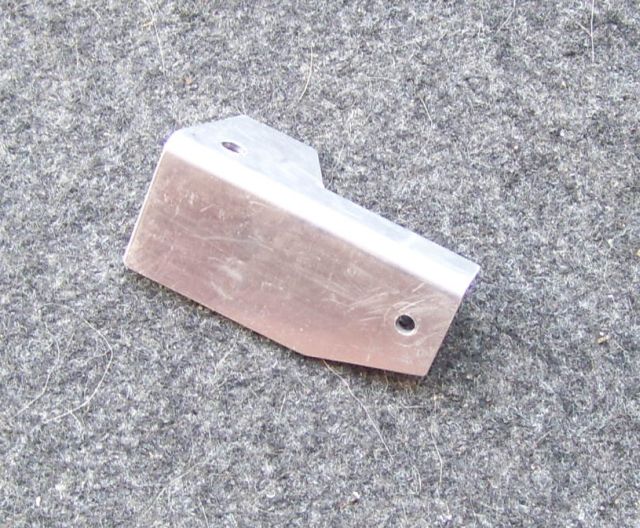
At the frame end, a fabricated 3mm aluminum bracket attaches to the fairing support above the engine. It's held by the 6mm bolt that attaches the fairing to the fairing frame. Silicon seal between the bracket and the fairing frame end to prevent rotation. The damper rod is perpendicular to the fork tube, so this bracket is angled up from the horizontal by the fork rake angle.
The damper shaft and body are held with 8mm bolts. Had to
remove the knurled damping adjusting knob at the damper shaft end to
prevent it hitting the fairing at full left lock. Damping can still be
adjusted without said knob.
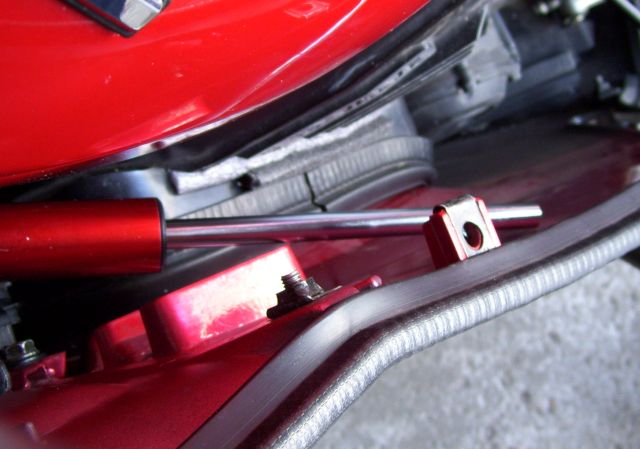
This longish damper snuggles happily under the fairing pocket,
moving in and out while also rotating a bit, without banging anything,
just as if Kawasaki had planned for this. The shaft end just clears the
fairing vents. Some luck was involved.
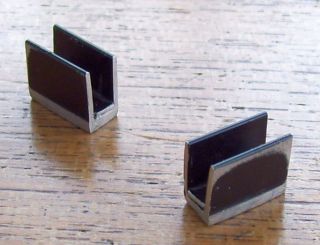
The actual stroke length measured 138 mm but the Concours really needs more like 150mm of damper travel and it would hit the ends of the damper travel before contacting the frame steering stop. I had to limit fork rotational travel with 3mm shim brackets glued to the frame steering stop, yielding about 134 mm of damper travel. These shims were made from a dead video card heat sink with 4mm spacing, the thickness of the steering stop on the frame.
The next larger Sprint damper (160mm stroke) is around 470mm
overall length, and I don't think it will fit in the space available
under the fairing. Maybe there's a damper somewhere with 150 mm of
travel and overall length 420 mm.
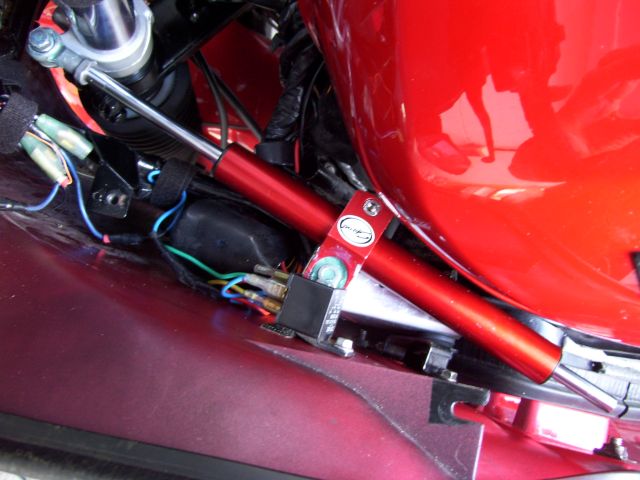
Testing this setup is very easy. Without the damper, there's hands-off wobble at 80kph. Even with the damper clicked to minimum setting, it's gone. This level of damping is not noticeable for normal steering inputs. I think all bikes should have one.
Using a steering damper allows the choice of front tire to be made for reasons of traction, responsiveness and comfort, rather than energy absorption to control wobble.
It also gets around using the steering head bearing friction as a damping mechanism. So now the bearing is set the way the factory recommends, no play, no preload; with the front wheel off the ground it falls to the side under its own weight. And because of the damper, there's still no wobble.